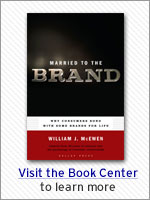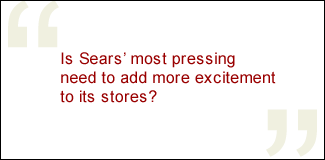Lately, there's been a great deal of retail industry buzz about the selling opportunities available through "experiential" marketing. In an arena where aggressively competing retailers have often searched in vain for ways to differentiate their offerings, a number of companies have moved away from the traditional focus on selling based on "Product" or "Price." They're now emphasizing the energy and excitement offered by a third marketing "P" -- Place.
 |
Shoppers can now visit stores around the globe that are designed and promoted as retail "theater" and that showcase everything from rock groups and karaoke to latte cafes and beauty bars. The goal is to create an atmosphere that turns a store into a sought-after destination, a place where shoppers won't just visit to buy a shirt or a CD, but will instead embrace as a venue where they can spend time, relax, and delight in the moment -- and, it's hoped, where they'll then spend even more.
Is this the elusive solution to the differentiation challenge confronting today's retailers? Some marketers may think so. But retail marketing programs that rely on in-store activities or themed promotions can be just as readily copied by competitors as those that focus on price or product. If rock groups and coffee bars seem to be the keys to a retailer's success, they can -- and no doubt will -- be copied. And if they're quickly mimicked by the competition, the promise of store differentiation will be short-lived. Then all that will have been accomplished -- aside from perhaps raising the decibel or caffeine level on Main Street -- will be escalating the company's ongoing marketing costs. Retailers can increase store traffic and even sales volume without building sustainable customer relationships.
The objective for any proposed marketing initiative, whether it's an in-store festival, a store redesign, or the introduction of a new product line, should be that it clearly serves to embody and reinforce the company's brand promise. Marketing activities must do more than generate short-term store traffic; they must help create and sustain a base of engaged customers. (See "The Engagement Imperative" in the "See Also" area on this page.) In-store "leisure experience" enhancements are tactics that won't have real value or produce long-term business results if they don't build on the company's core DNA and support its differentiating message to consumers.
Sending the right message
 |
Store activities, displays, and special kiosks must be viewed and managed as message mechanisms -- as communication devices for registering and supporting the company's brand message. They thus present much the same challenges and opportunities as a proposed new advertising campaign. Adding in-store events and interactive nooks is no more the solution to all marketing ills than is hiring a celebrity to appear in the company's ad campaign. (See "When the Stars Don't Shine" in the "See Also" area on this page.) The question marketers should ask themselves is not "Is this fun or entertaining?" but "Does this clearly support my company's brand promise?"
An overlay of "excitement" or "energy" may well represent a strong fit with the company's desired image and its intended brand positioning, or it may just be a source of additional noise, confusing current customers. Would an overlay of excitement and energy enhance Tiffany's message to consumers -- or would it somehow diminish it? Is Sears' most pressing need to add more excitement to its stores? Or does Sears really need something much more basic and potentially enduring?
A focus on "experience" enhancement may even serve as a distraction to the company and its managers, especially if they concentrate on experiential tactics while ignoring the company's more fundamental business-building challenges.
Of course, experiential marketing options include much more than just rock bands and cappuccino machines. The opportunities for a retailer include everything from multimedia surround-sound listening studios to interactive environments for testing the performance of washing machines, small appliances, or do-it-yourself tools. They also range from establishing family- and kid-friendly places for tired moms to stop, browse a magazine, and relax to building a bright showplace for experiencing whatever's hot and "fashion forward."
The point is that experiential marketing isn't a silver bullet for retailers. Retail theater certainly has the potential to enhance business performance and build customer engagement, but it must be approached strategically. It should be assessed, addressed, and managed according to the nature of the opportunity and in recognition of a company's customer relationship challenges as well as its business and communications objectives.
As with any marketing investment, experiential marketing must also demonstrate a payoff. These initiatives require an ongoing investment of what is likely to be a considerable amount of time and money. What's more, this investment comes at the expense of other potential uses for these same resources. And, of course, many experience-enhancing additions involve something even more precious to a retailer: converting a store's "selling" space into theater space. Customers who visit, and even linger a while, may not be customers who buy -- and keep buying.
Key questions
Before implementing an experiential marketing program, retailers should ask themselves not just how the program will be funded and executed. They must also ask three important questions:
- What message does the proposed program send to our current customers and our key prospects?
- How well does that message fit with what we stand for -- and with everything else we say, do, and offer to our customers?
- Will this program help build and sustain a strong and enduring emotional connection with our customers?
There are many possibilities for enhancing the retail "Place," and the opportunities are undeniably real. Retailers are recognizing that the customer's shopping experience is driven not just by "Product" and "Price" considerations, and many retailers are understandably intrigued by what they can do to build real value into the "Place" component. But for retail marketers seeking meaningful differentiation from their competition -- and long-term brand marriages with their customers -- there can be neither cheap fixes nor simple solutions. For an ailing store chain, adding a couch, a string quartet, and a mocha latte may not be just what the retail doctor ordered.